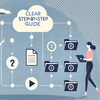
The IoT market is currently exploding with millions of devices online daily. In a couple of years, we will be talking about billions of such devices. And, since there are no viable reasons for the IoT to stop developing at this crazy pace, we will eventually end up with hundreds of billions. This is quite a big share of all electronic devices. And, of course, technical documentation should be there for users. The question that interests technical writers the most is: how will technical writing change? Will it have to adapt to the new environment? Here’s what we believe is going to happen in this transition period.
Technical writers will be drawn closer to the development process. Involving documentation teams in the dev process will give them deeper understanding of how the tool works. If you know how it works, you can explain it to others. The fact that technical writers often require additional qualification connected to the area of employment is old news, although it seems that the current reality is pushing this to the next level.

As the IoT is all about usability, long and complex user guides won’t work anymore. So, help information needs to come to users timely and in small chunks. That explains the rise of career opportunities for UX writers. This occupation is still figuring out what it wants to become. Employers are still not sure whether there needs to be a separate role for a UX writer in the company, or people who are already on staff can take up these responsibilities. But, there’s certainly a common understanding that UX writers are required.
This trend originates from big companies who started opening UX writing vacancies some time ago and smaller businesses turned their attention to this role right after. UX writing is very important in the IoT as this industry is dealing with a lot of simple domestic or everyday use devices and user-friendliness is the cornerstone here. Otherwise, the IoT would defeat its own purpose of making people’s lives easier.

Also, people are talking a lot about special standards that need to be developed for technical documentation. A critical lack of standardization is looming over the IoT field in general. Different companies working with the IoT, technical committees, vendors are all eager to call their frameworks the industry standard. So, unfortunately for the IoT, this lack of standardization is holding the industry back now even though the potential is there for these technologies to become transformative for the whole world.
Standardizing technical documentation would make a nice and solid stepping stone for systemizing the IoT on the whole. A good example of going in the right direction is Intelligent Information Request and Delivery Standard (iiRDS), a new content delivery standard. Help data can become intelligent information and can be adjusted for users. Such an approach will make a huge difference to technical documentation as we know it.
Conclusion
Future always seems demanding, and it is. Progress doesn’t rely solely on new inventions, it is also about adoption. Technical writing plays an important role in the adoption of new technologies and devices, so, making sure that users get all the help they need when they need it is key to success. Help should become more precise and targeted, this can be achieved through goal setting, letting technical writers inside the development process and standardization.
Good luck with your technical writing!
ClickHelp Team
Author, host and deliver documentation across platforms and devices



